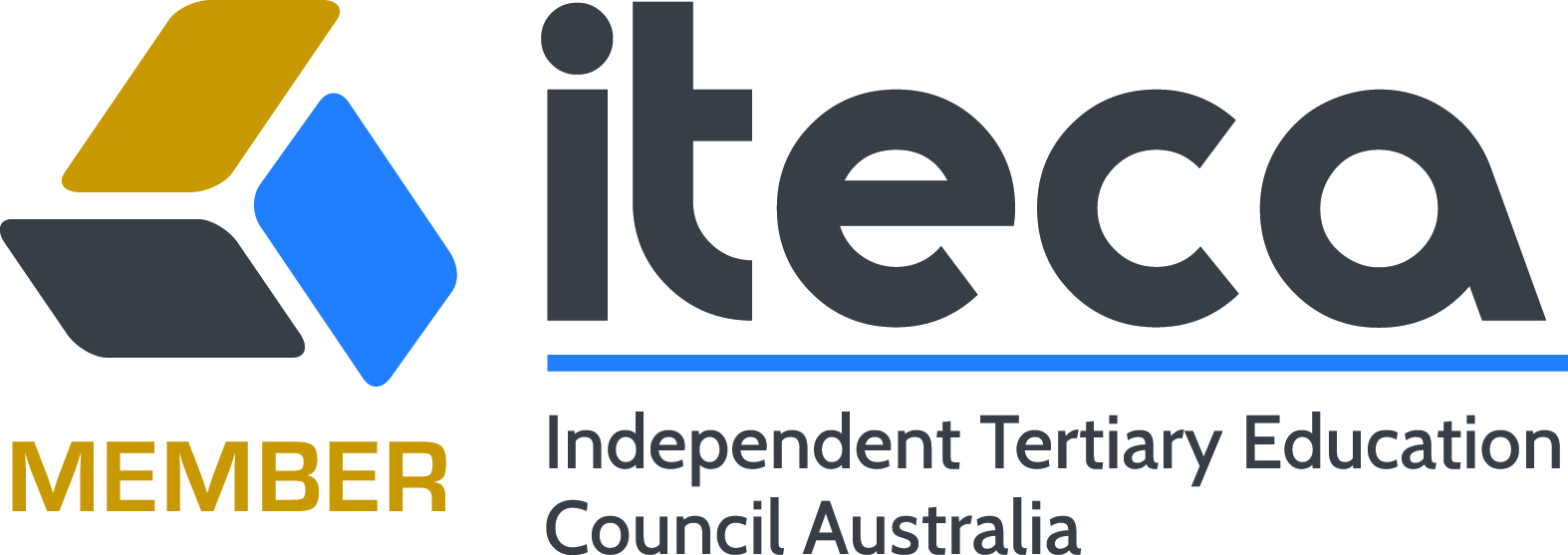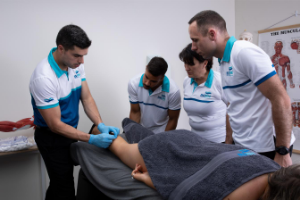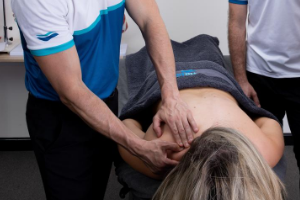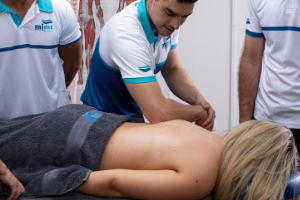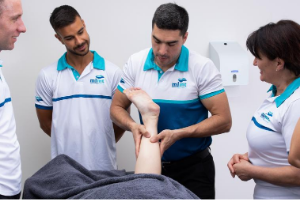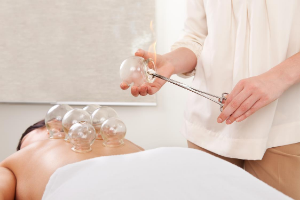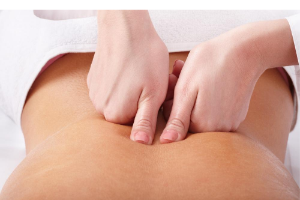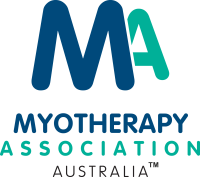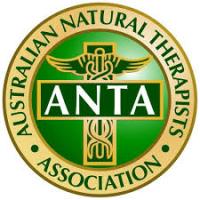We offer a range of Nationally Recognised Massage Therapy Courses here in Melbourne
Discover a range of specialist massage therapy courses in Melbourne with MIMT. We offer courses for students with a range of experience, from introductory to postgraduate levels. View the wide range of massage therapy courses available at MIMT, and if you have any questions, contact us on 1300 839 839 for more information.
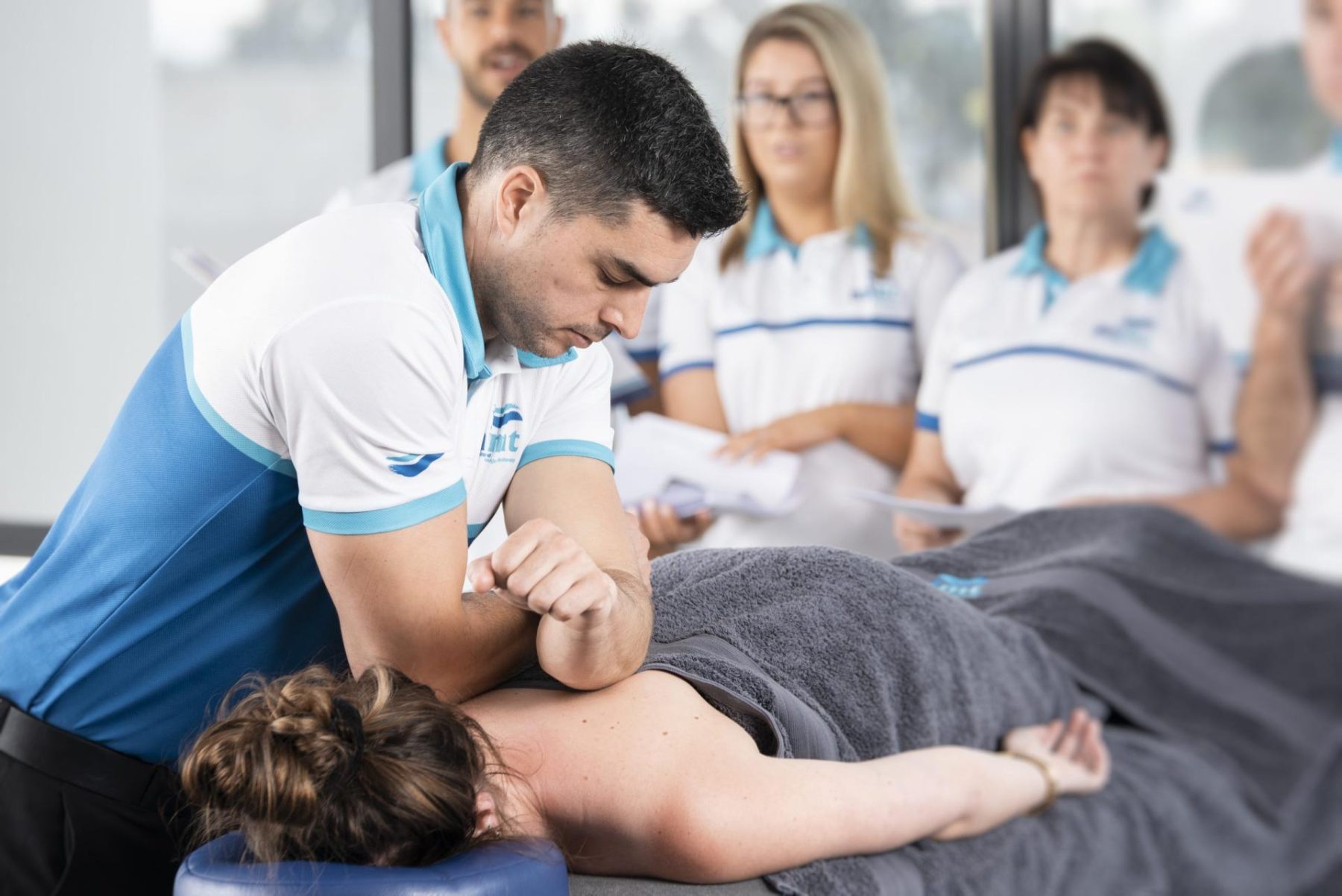
Certificate IV in Massage (HLT42021)
- Entry qualification to be recognised as a Professional Massage therapist
- Gain the skills required including Anatomy & physiology, hands on practical massage skills and first aid
- Career opportunities including Private Practice, Wellness Centres, Health Spas, Mobile Massage and Cruise Ships
- Professional accreditation & insurance with major Massage & Myotherapy associations
- Several funding options available
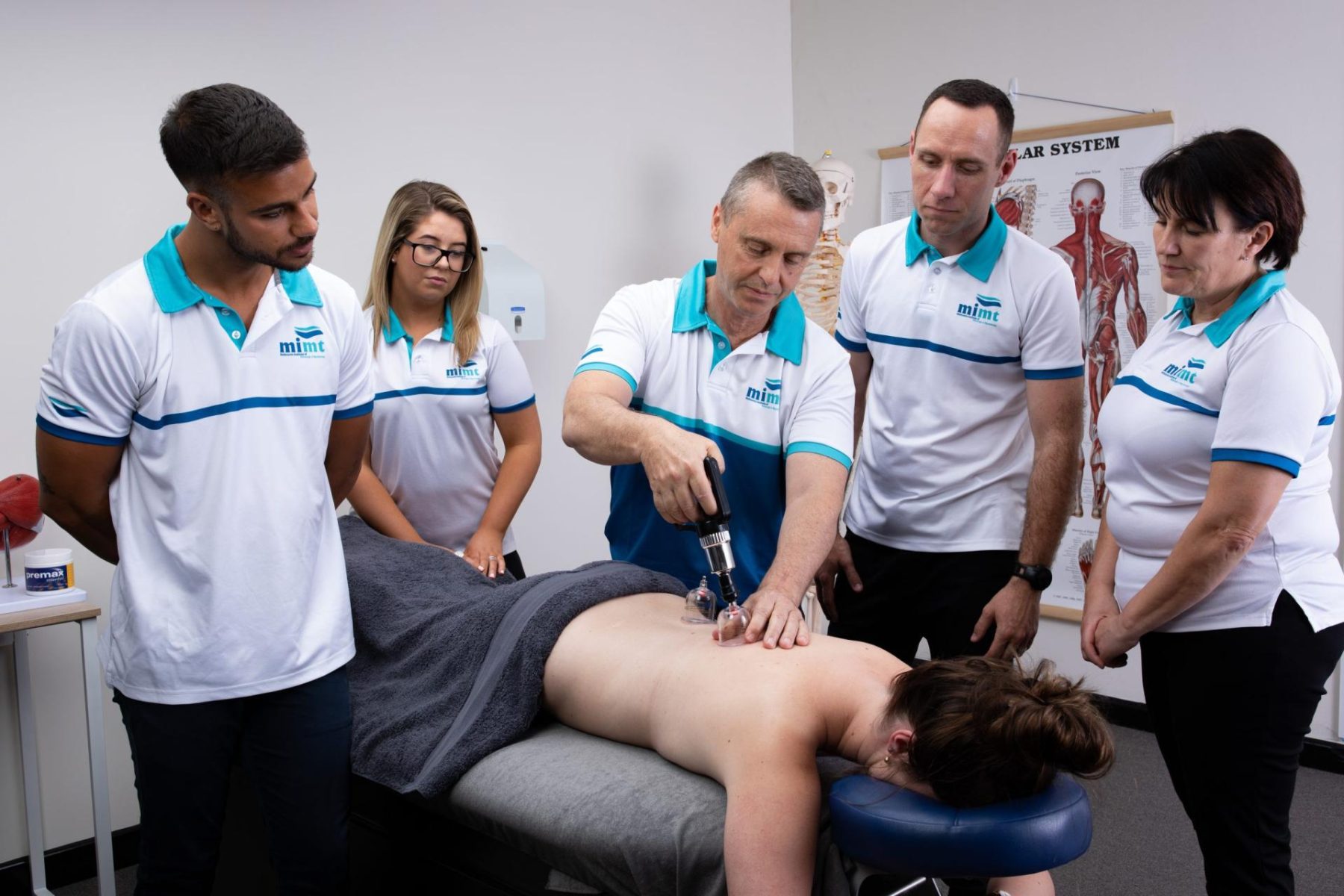
Diploma of Remedial Massage (HLT52021)
- Includes core skills and knowledge from Certificate IV in Massage
- Develop your skills in all areas so you can serve your client as a Remedial Therapist
- Increase your knowledge of health sciences and learn Musculoskeletal assessment skills
- Enhance your massage treatments with subjects such as Remedial Sports Massage, Cupping and Myofascial release
- Recognition by most private health insurance companies giving you access to a lucrative market
- Career opportunities including Private Practice, Wellness Centres, Health Spas, Mobile Massage, Cruise ships and sporting clubs
- Funding options available
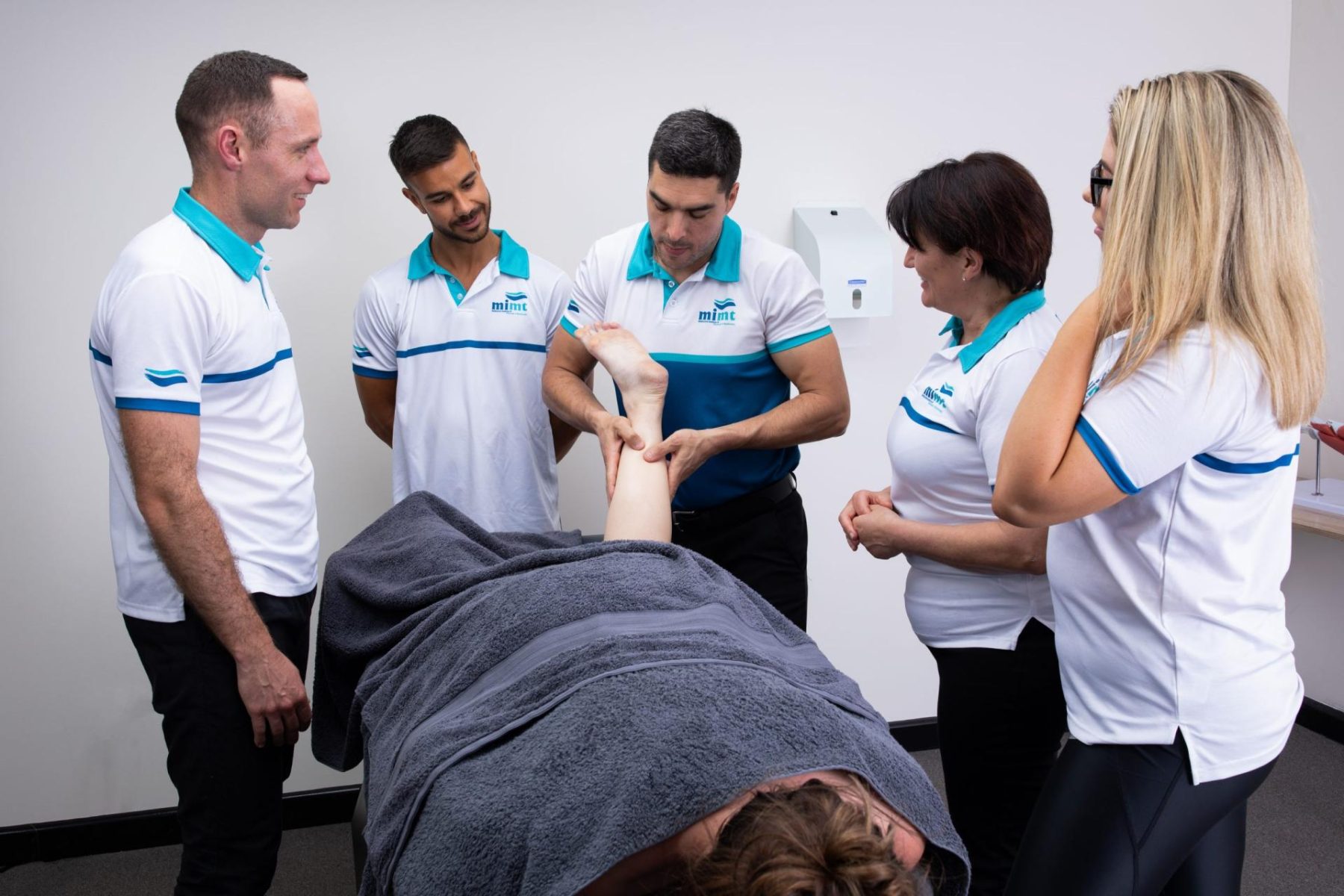
Diploma of Remedial Massage (HLT52021) (Upgrade Course)
- If you hold a Certificate IV in Massage (HLT42021) continue your learning where you left off.
- Become a Remedial Massage Therapist and work in an integrated way with other health professionals
- Learn Remedial Treatment techniques such as Remedial Sports Massage, Myofascial release and Suction cupping to name a few
- Career opportunities including Private Practice, Wellness Centres, Health Spas, Mobile Massage, Cruise ships and sporting clubs
- Recognition by most private health insurance companies giving you access to a lucrative market
- Funding options available
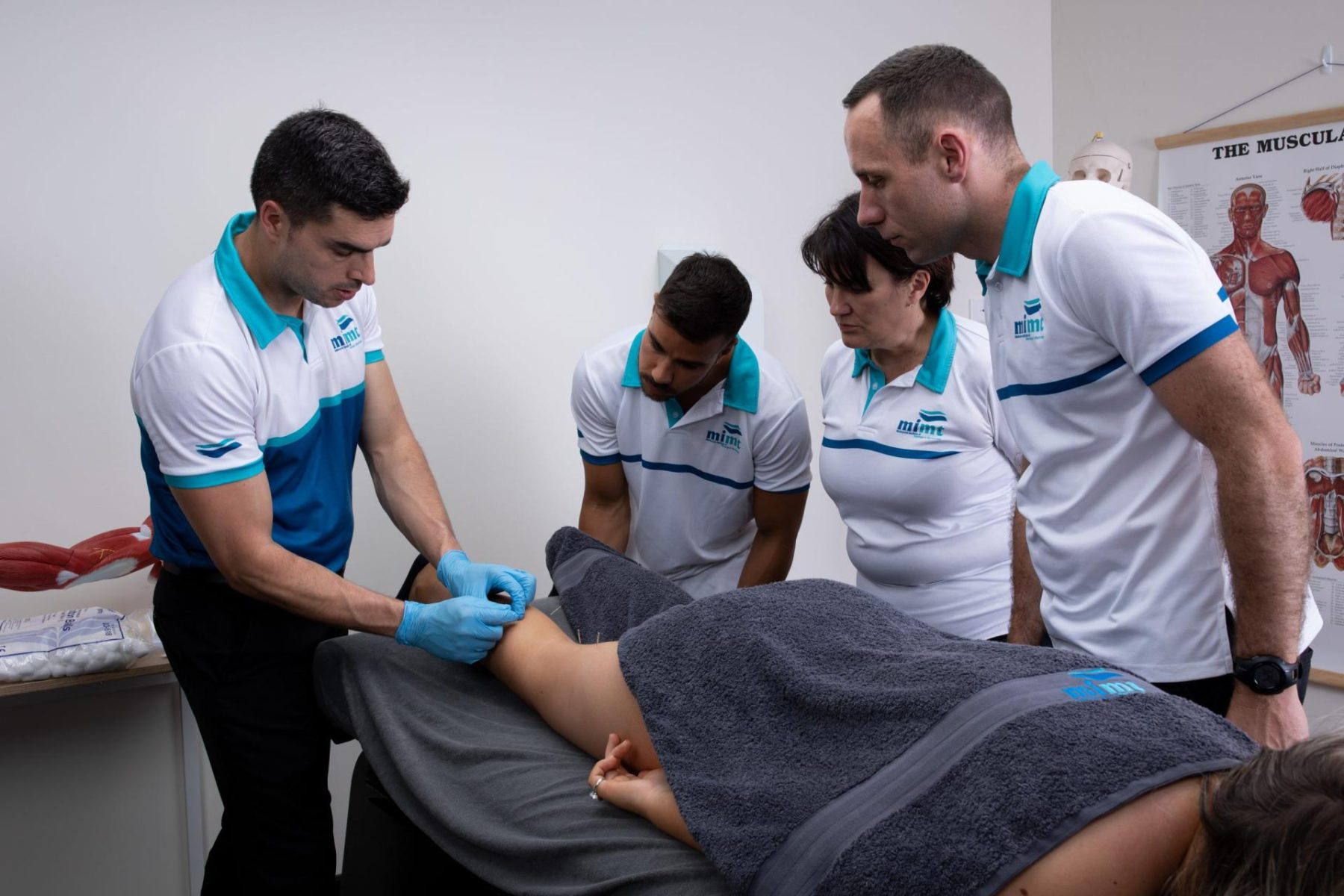
Advanced Diploma of Myotherapy (22316VIC)
- A Myotherapy student uses treatment regimes and clinical orthopaedic assessments to enhance the overall treatment plan.
- The course emphasises the assessment and treatment of myofascial dysfunction.
- Subjects include myofascial dry needling, therapeutic exercise prescription, nutrition, electrotherapy and business management subjects to name a few
- Work in a clinical environment on completion
- The prerequisite for this course is a Diploma of Remedial Massage*
- Several funding options available
Looking for a short course?
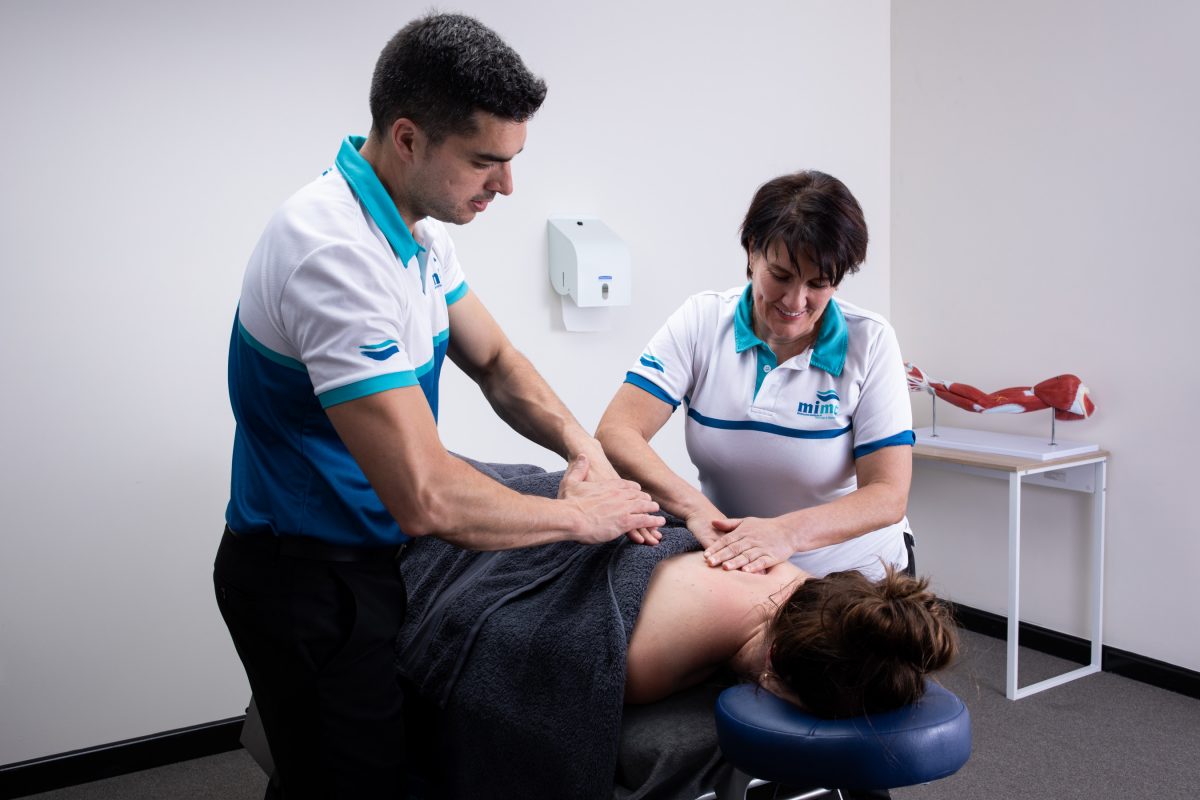
Introduction to Massage Therapy
Our Melbourne based Introduction to Massage Therapy course is a 13-hour course designed to help you learn the fundamentals of massage. You can immediately use the skills and techniques, you will certainly impress your family and friends!
Elite professional Massage Therapists and trainers conduct these courses, showing you how to correctly and safely deliver massage. The classes are enjoyable, informative, and full of “hands on” massage practice.
You will be able to experience our teaching methods and learn new skills while assessing if a massage career is for you without a huge financial commitment.
Please note this is not a qualification.
We also offer Post Graduate Courses
Here at Melbourne Institute of Massage Therapy & Myotherapy, we live and breathe massage. For those students who have graduated from the Certificate of IV in Massage, Diploma of Remedial Massage or Advanced Diploma of Myotherapy, there are several options available for postgraduate study. These include:
Hear from some of our happy students
Very, very thorough. Our trainer Lily had a wealth of experience and related a lot of information from a clinical perspective. Really enjoyed it !!
The way the course was run was exceptional. Very well organized and professionally run.
Felt supported the whole way through, whole structure was great!
Really liked the course structure, and the ability to practice everything taught.
Frequently Asked Questions
Myofascial release is used to treat myofascial pain. This is caused by tightness and sensitivity in the myofascial tissue (this supports muscle throughout the body).
During myofascial release, you will massage and stretch rigid or tense areas of your client’s body with light manual pressure.
What’s the difference between a myofascial release and myotherapy? Do I need to know how to do both?
Myotherapists use myofascial release all the time. The main difference – myofascial release is a technique, whereas myotherapy is a practice.
Myotherapy is a form of physical therapy which focuses on the assessment, treatment, and rehabilitation of musculoskeletal pain or restricted joint movement.
Myofascial release training can be beneficial for myotherapists, sports massage therapists, remedial therapists, soft tissue therapists and physiotherapists.
Our myofascial release therapy training is considered a short postgraduate course. You will be required to complete 18 hours of training and complete an assessment to pass the course.
Our Myofascial release course is conducted face to face at either our Heidelberg or Moorabbin campuses.
You will need to attend class on campus for the “hands on” massage units. This is programmed at various times throughout the year.
We have a wide range of postgraduate courses you can take to refine and expand your massage therapy skills. For example, you might choose to study dry needling, cupping therapy, oriental massage, or soft tissue therapy, all of which can help broaden your experience.
To complete one of our accredited online massage therapy programs, you’ll just need a laptop – that’s it! Most of the course is completed online and you will receive regular presentations the same way you would in the classroom. Just remember to keep taking notes!
Once you’ve enrolled, you will also receive some digital readings to complete ahead of class. This will help boost your knowledge and keep you engaged in the course.
Yes. There are no prerequisites and you are not required to be studying a diploma or certificate at the same time. These courses can be taken singularly.
Yes, but not often. You will need to attend class on campus for the “hands on” massage units and assessments at the end of the health science unit. This is programmed at various times throughout the year.
Our musculoskeletal anatomy units have proven popular with pilates students who need to gain valuable underpinning anatomy knowledge before starting specific pilates studies.
However, our accredited online massage therapy programs can also be beneficial for massage and myotherapy students looking to brush up on their anatomy knowledge and skills.
You will learn online for the vast majority of the course. You will be required to attend online presentations and watch videos, like you would in a regular class. Plus, you will have support via email and student forums to ask questions and discuss readings or theories.
You will also have a dedicated facilitator/instructor to guide you through the course and answer any questions you may have.
Cupping is an ancient and alternative form of medicine where a massage therapist places cups on the skin for a few minutes, causing the skin and muscle to be pulled into the cup.
These cups are often made from glass or silicone.
Cupping therapy can be used to reduce pain and inflammation and can be used in deep tissue massage. With the Melbourne Institute of Massage & Myotherapy, you will learn how to use cupping to treat musculoskeletal problems and how this comes into the practice of remedial massage. You will also learn some traditional Chinese medicine philosophies and western perspectives on the benefits of cupping.
Throughout the course, we will review:
- Actions of cupping from a TCM and western perspective
- Indication of cupping
- Cautions and contraindications for cupping
- Methods of cupping
- Formulation of a cupping treatment plan
- Integration of cupping with massage by using case history examples
Note: a Certificate IV of Massage Therapy is a prerequisite for this course.
Cupping is not essential for massage therapists, myotherapists, and physiotherapists. However, it is still a beneficial skill to have – cupping is becoming more and more popular to treat musculoskeletal pain!
Before offering cupping therapy to your clientele, we recommend taking our nationally recognised cupping course and learning the essential skills to complete cupping safely and effectively.
Cupping courses are conducted face to face at our Heidelberg Campus.
Our cupping therapy courses are around 18 hours long. It is considered one of our short courses and an extension of our diploma and certificate courses.
Not necessarily. Some physiotherapists with knowledge around traditional Chinese medicine offer cupping to promote blood circulation by lifting the connective tissue, loosening adhesions, and restoring blood flow to areas of the body that have been restricted. This can be good for deep tissue repair.
However, not all physiotherapists find cupping helpful and the negative side effects (for example bruising and cupping marks) can sometimes outweigh the good.
Overall, we recommend taking a cupping course just to be safe – you never know where you’ll end up working, or if clients will request this unique form of massage therapy.
Cupping is becoming more and more popular for relaxation, wellbeing, and stress relief. While it is not essential to have cupping experience to become a massage therapist, we recommend taking a cupping course if you plan to offer cupping as a service.
Only students studying a Diploma of Remedial Massage at the Melbourne Institute of Massage & Myotherapy can apply for VET student loans. However, we have a wide range of student loan options to choose from.
For more information on our student loans, please get in touch with the course advisor.
At the Melbourne Institute of Massage & Myotherapy, you will receive both practical and theoretical experience. You will learn about traditional Chinese medicine philosophies and western perspectives on the effectiveness of cupping.
You will also get some hands on experience in our student massage clinic on campus. This will help ensure you know how to safely and effectively offer cupping to future clients and patients.
You will not be required to do work experience for this course.
Want to expand your skills even further? Taken an interest in traditional Chinese medicine and their philosophies? You might consider taking our interactive dry needling postgraduate course. Similar to the practice of acupuncture, dry needling involves inserting thin needles into the muscle to relieve stress, pain, and tension.
Yes.
Massage therapists are often called upon to assess and treat myofascial pain, injuries, and dysfunction affecting movement and mobility. If you’re planning on working in a clinical environment, you must have the qualifications, experience, and education to treat patients.
Absolutely. At MIMT, we want education to be accessible to everyone, so we offer a wide range of support options for our students.
Skills First Funding (formerly Victorian Training Guarantee, Government subsidised funding) is available for some courses, but eligibility criteria may apply. VET funding is also available through the Australian Government, along with Student Loans, but again, some eligibility criteria may apply.
If you are ineligible for these specific student support programs, we also offer flexible payment plans at MIMT. Make sure to get in touch with our course advisors to find out more.
After achieving a Diploma of Remedial Massage, we recommend pursuing an Advanced Diploma of Myotherapy.
With an Advanced Diploma of Myotherapy, you will learn more advanced techniques like dry needling and cupping, so you can provide a wide range of services to clients and patients alike. You will enhance your existing knowledge and experience in remedial massage, and open up a world of opportunities in more clinical work environments and roles.
If you’re simply looking to add some new skills to your existing Diploma in Remedial Massage, we recommend taking some short courses like dry needling and cupping. These short courses will pave the way for future learning and the Advanced Diploma in Myotherapy.
Job prospects are changing all the time – however, Job Outlook projects the number of massage therapists in Australia is due to grow over the next few years. There are likely to be 10,000 job openings with more part-time work available than full-time.
Before committing to a new career, it’s a good idea to check job listings in your local area. You will also have the option to start your own business or work from home as a massage therapist.
Need to move town? Our diplomas and courses are nationally recognised and accredited, so you will be able to take your massage therapy experience wherever you go.
It depends on what career path and course you’re looking to take. For example, our Diploma of Remedial Massage can be studied part time or full time, but our Advanced Diploma of Myotherapy is a comprehensive, full time course spanning nine months.
Our short courses, on the other hand, are face-to-face. However, our short courses require a Diploma in Remedial Massage.
Most of our courses require attendance on campus at least one day a week. Some subjects can be studied online, so a laptop or PC will be required for online lessons.
For our Diploma of Remedial Massage and Advanced Diploma of Myotherapy courses, you will be required to spend extra hours outside of the course doing work experience. This is essential for you to get some additional hands-on experience and get a feel for the industry.
We have lots of work experience opportunities available. For Remedial Massage, you can spend some time providing remedial massage at local football clubs, or learn from medical professionals in a clinical environment.
For Myotherapy, you will spend additional hours in our student myotherapy clinic on campus, but also have the opportunity to provide myotherapy services in sporting clubs and charitable organisations.
For more information about our work experience opportunities, get in touch with our course advisors.
It depends on which course you’re planning to take. For example, our Advanced Diploma of Myotherapy is a full time course which lasts nine months, whereas the Diploma of Remedial Massage can be taken part time or full time, so you can learn at your own pace.
Dry needling is a modern treatment designed to relieve muscular pain. Thin stainless steel needles are inserted into “trigger points” to help release tension, relieve pain, and reduce muscle spasms. The needles are left in the skin for a short amount of time.
The approach is based on western anatomical and neurophysiological principles, and it’s growing in popularity.
It’s important to note that dry needling is not the same as acupuncture. Acupuncture is based on traditional Chinese medicine going back hundreds, if not thousands, of years.
Dry needling use thin, stainless steel needles that are inserted into the skin to treat muscle pain, tightness, and discomfort. The needles are inserted into the skin but do not inject fluid into the body, thus the name “dry” needling.
Before undertaking the dry needling course, you must complete a Diploma in Remedial Massage – this will help ensure you have the essential skills and basic knowledge to undertake dry needling.
Dry needling is quite often used in clinical or medical environments. It is commonly used by doctors, physiotherapists, chiropractors, remedial sports massage therapists, and soft tissue therapists.
Due to the nature of the practice, our dry needling course cannot be taken online or via distance education.
Our dry needling course is a 60 hour face-to-face experience and is considered one of the most comprehensive dry needling courses available in Melbourne.
The dry needling subject can be undertaken as a stand alone course and completing this course will be provided you with a credit towards an Advanced Diploma in Myotherapy with MIMT.
Yes.
Physiotherapists practice dry needling to decrease myofascial tension and improve musculoskeletal function.
To enter our dry needling course, you must already have a Diploma in Remedial Massage. However, there are lots of other learning opportunities and courses you can take to compliment your dry needling experience.
After completing the dry needling course, you will be awarded additional units to go towards an Advanced Diploma in Myotherapy. This practice refers to the assessment, treatment, and rehabilitation of musculoskeletal pain or restricted joint movement in a clinical environment.
Alternatively, you can pursue further short courses, including:
Remedial massage is designed to assess and treat myofascial pain, injuries, and dysfunction affecting movement and mobility.
Remedial massage can treat a wide range of conditions, including:
- Sporting and occupational injuries
- Stiffness and pain associated with poor posture
- Joint and vertebrae pain
- Headaches and migraines
- Knee, leg, and foot pain (including sprains)
- Neck, back, and shoulder pain (acute or chronic)
- Acute and chronic stiff and painful neck
- Tendonitis, RSI, carpal tunnel, or tennis/golfer’s elbow
- Pre/post natal complaints and soreness
- Pain associated with stress or tensions
- Rehabilitation for injuries and/or illness
Remedial massage differs from relaxation massage because it is designed to be a “remedy” for pain, discomfort, and problems with joint mobility. Remedial massage, restores the normal integrity of muscles, tendons, ligaments, and fascia.
The treatment and techniques used are tailored to each individual and their specific needs.
Pressure during a remedial massage can also be much deeper and more intense than a relaxation massage.
Absolutely.
Our remedial massage course in Melbourne is recognised by various professional associations including Massage & Myotherapy Australia (M&MA), Association of Massage Therapists (AMT), Myotherapy Association Australia (MA), the Australian Natural Therapists Association (ANTA) as well as several other Associations.
You will learn the specific techniques and skills required to provide remedial sports massage. Multiple graduates have gone on to provide treatment for sports injuries and remedial massage for elite sporting organisations.
You will also have the opportunity to gain hands-on work experience at local sporting clubs, so you can see what it’s like to work in the field.
Our Diploma of Remedial Massage in Melbourne can be completed at our Heidelberg or Moorabbin campuses. Some elements of the course may be undertaken online.
Some hands-on practical experience will be required at our student massage clinic on campus.
The career opportunities are endless with a Diploma of Remedial Massage. A few possibilities include:
- Remedial sports massage and injury management, working alongside chiropractors and physiotherapists
- Health clinics and/or Allied Health
- Home or mobile massage services (self employment), or you might choose to open your own practice
- Relaxation massage and/or spas
The cost of the course can differ from year-to-year. However, you can find our statement of fees on our forms page.
According to recent statistics, remedial massage therapists earn around $48.90 per hour on average.
Our remedial massage course in Melbourne lasts for around 13 months if taken on a full-time basis.
Absolutely. We have a wide range of financial support options, so you can learn the essential skills you need for a career in remedial massage.
Skills First Funding (formerly Victorian Training Guarantee, Government subsidised funding) is available for this course, however, eligibility criteria may apply.
VET funding is available through the Australian Government, along with Student Loans. Again, some eligibility criteria may apply.
At MIMT, we also offer flexible payment plans – make sure to get in touch with our course advisors to find out more.
We want you to get the most out of your learning experience at MIMT. To ensure you get the practical, hands-on experience you need to become a professional remedial massage therapist, we offer work experience opportunities in football clubs, corporate and clinical environments, and much more.
You will also be required to spend some hours outside of the course in our student massage clinic.
Get in touch with our course advisors for more information about our work experience opportunities.
A Diploma in Remedial Massage is the essential first step to becoming an accredited remedial massage therapist. After graduating with a diploma, you can continue learning with an Advanced Diploma of Myotherapy. This course will give you the skills you need to provide more complex treatments like dry needling and cupping.
You can also take part in a wide range of workshops and short courses to refine and grow your skills, for example:
After graduating from an Advanced Diploma in Myotherapy, you can undertake a wide range of additional studies. Whether you need a refresher on certain techniques or just want to learn new skills and gain more experience, you should consider taking one of our postgraduate courses.
These include:
To get the best possible outcome and experience from your Advanced Diploma in Myotherapy, you will need to complete some hands-on, practical experience in the field.
These hours will need to be completed outside the course.
You will receive training in our own student myotherapy clinic, but you will also need to get some experience in local sporting clubs and/or charitable organisations.
For more information on work experience and finding opportunities, please get in touch with our course advisors.
Our Advanced Diploma of Myotherapy must be completed at our Heidelberg campus in Melbourne. Attendance on campus is required one day per week, and participation at our myotherapy clinic is also required for practical, hands-on experience.
Some subjects, however, are delivered online. A laptop or PC will be required to complete these subjects at home.
Absolutely. We have a wide range of financial support options, so you can learn the essential skills you need for a career in myotherapy.
We offer flexible payment plans so you can pay your course off over time. For more information on our payment plans and our fee schedule, please get in touch with our course advisors.
Alternatively, Student Loans and Skills First Funding (formerly Victorian Training Guarantee, Government subsidised funding) is also available for this course – however, eligibility criteria may apply.
Our Advanced Diploma of Myotherapy course is full time and can be completed in nine short months.
The cost of the course can differ from year-to-year. However, you can find our statement of fees on our forms page.
Our Advance Diploma of Myotherapy course is recognised by all the Industry Associations.
After completing our Advanced Diploma of Myotherapy course in Melbourne, you will be recognised as a Myotherapist, meaning you can work alongside other specialists like osteopaths, physiotherapists, and chiropractors.
You could also open a private practice or work with elite sporting teams.
From a broader perspective, around 40% of students end up in health care or social assistance, 10% in retail, and 6% in education (i.e. training other aspiring massage therapists to become myotherapists).
In our Melbourne-based myotherapy course, we will cover the following subjects:
- Myofascial Dry Needling
- Myotherapeutic Palpation Review
- Myotherapy Clinical Assessment
- Nutrition
- Myotherapy Treatment Protocols
- Myotherapy Practices & Principles
- Mobilising Techniques
- Muscle Energy Technique
- Electrotherapeutic Modalities
- Exercise Prescription & Rehabilitation
- Myotherapy Business Protocols
- Research Methods
Myofascial cupping (otherwise just known as “cupping”) is an ancient Chinese form of treatment. A glass, plastic, or bamboo cup is applied to the skin, then the pressure inside the cup is reduced in order to draw and hold the skin and superficial muscle tissue inside the cup.
The cupping process draws blood from the vessels and into the sore tissue. Essentially, cupping triggers a positive inflammatory response to heal the area.
In our myofascial cupping course, you will learn the western perspective of how cupping works on muscle and help increase range of movement.
You will also be able to introduce this technique to your remedial massage skills and provide a more in-depth experience for your clients.
The practice of myotherapy is more complex than regular remedial massage and requires a higher level of education, like an advanced diploma. For example, myotherapists are qualified to provide dry needling services and advanced assessments, myofascial cupping, as well as exercise rehabilitation.
Our Advanced Diploma of Myotherapy is nationally recognised, meaning you will have the experience, qualifications, and skill to work anywhere in Australia.
Myotherapy is a form of physical therapy which focuses on the assessment, treatment, and rehabilitation of musculoskeletal pain or restricted joint movement.
Myotherapy uses a range of treatment modalities including trigger point therapy, muscle energy techniques, dry needling, stretching, and joint mobilisation. The techniques and treatments are provided are evidence based.
A myotherapist can also provide advice and education around nutrition, exercise, and posture to help relieve and prevent pain.
All of these valuable skills can be learned in our myotherapy course in Melbourne.
Please click on the link below to view our Student Enrolment Handbook.
